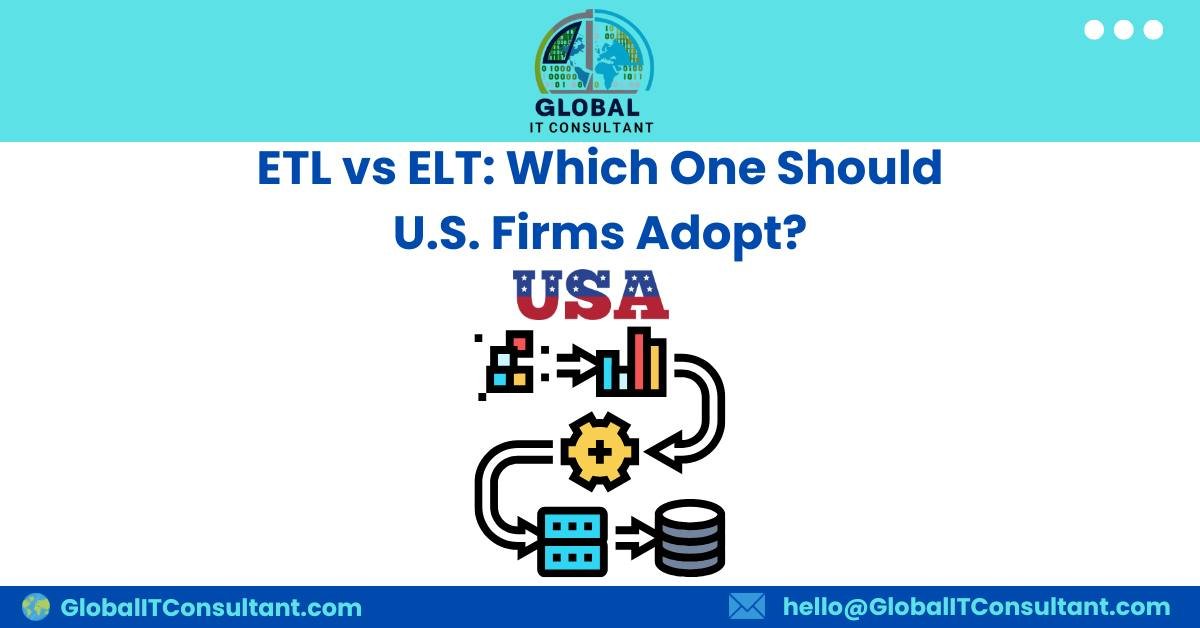By Ankit, Senior Data Integration & Digital Strategy Consultant
In my role consulting for U.S. firms across SaaS, education, and enterprise sectors, I’ve seen firsthand how the choice between ETL and ELT can significantly impact performance, scalability, and ROI. Both are essential data integration methods, but which one your business should adopt depends on your tech stack, data goals, and compliance needs.
Let me break it down.
🔄 What Is ETL?
Extract, Transform, Load (ETL) is a traditional approach where data is:
- Extracted from source systems
- Transformed in a staging environment
- Loaded into a data warehouse or destination
✅ Best For:
- Businesses with strict data governance and structured datasets
- On-premise databases
- Firms using older data warehouses or legacy tools
📌 Real-life case: A U.S. healthcare client we worked with preferred ETL due to HIPAA compliance and the need for high control over data transformations before it ever touched their storage layer.
⚡ What Is ELT?
Extract, Load, Transform (ELT) flips the process:
- Extract the data
- Load it into the data warehouse first
- Transform it after it’s already there, using the power of modern cloud platforms like Snowflake, BigQuery, or Databricks
✅ Best For:
- Companies using cloud-native architecture
- Handling big data or semi-structured formats (e.g., JSON, Parquet)
- Faster time-to-insight with on-demand transformation
📌 Client example: A fast-growing U.S. edtech company we support moved from ETL to ELT to handle real-time learning analytics. Using BigQuery and dbt, they reduced report latency from 12 hours to under 30 minutes.
🧠 ETL vs. ELT: Key Considerations for U.S. Firms
| Factor | ETL | ELT |
|---|---|---|
| Data Volume | Small to medium | Medium to very large |
| Speed & Scalability | Moderate | High (cloud-based parallelism) |
| Compliance Control | High (pre-load transformation) | Moderate (post-load governance) |
| Tooling Stack | Informatica, Talend, SSIS | dbt, Fivetran, Snowflake SQL |
| Use Case Fit | Finance, Healthcare | E-commerce, SaaS, Marketing |
✅ My Recommendation as a Consultant
- ETL still holds strong in heavily regulated industries and legacy environments.
- ELT is the better choice for most modern U.S. firms moving toward cloud-first, real-time analytics, and scalable data pipelines.
💡 Pro Tip: Many organizations use a hybrid approach — ETL for compliance-sensitive data, and ELT for high-volume analytics.
🏁 Final Thoughts
Choosing ETL vs. ELT isn’t just a technical decision — it’s a strategic one. As someone who advises U.S. firms daily, I recommend reviewing your current data warehouse, future growth plans, and internal skillsets before deciding.
Need help evaluating what’s best for your team? Let’s talk. I’m happy to share insights from what’s working across industries — and what’s not.

